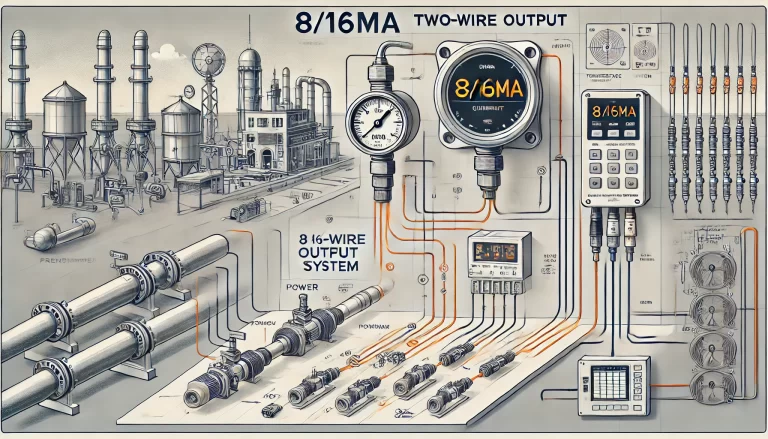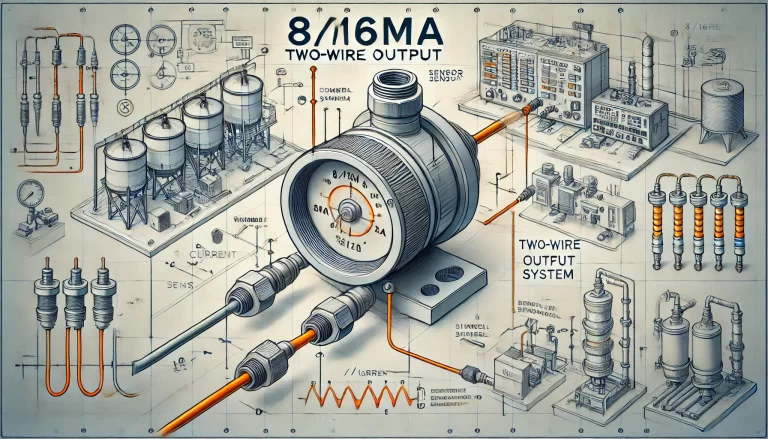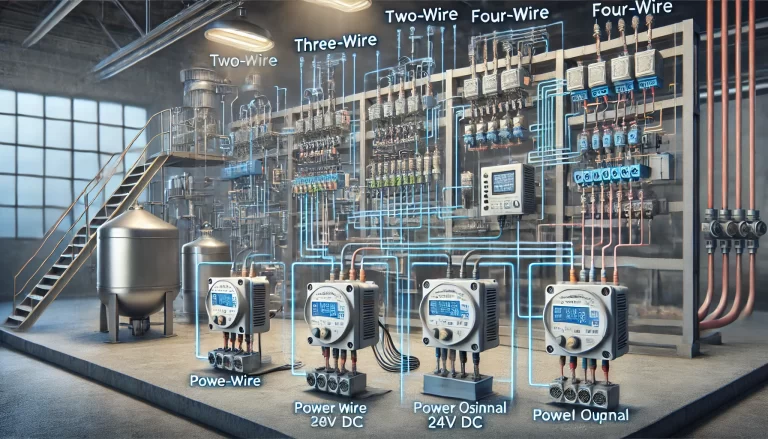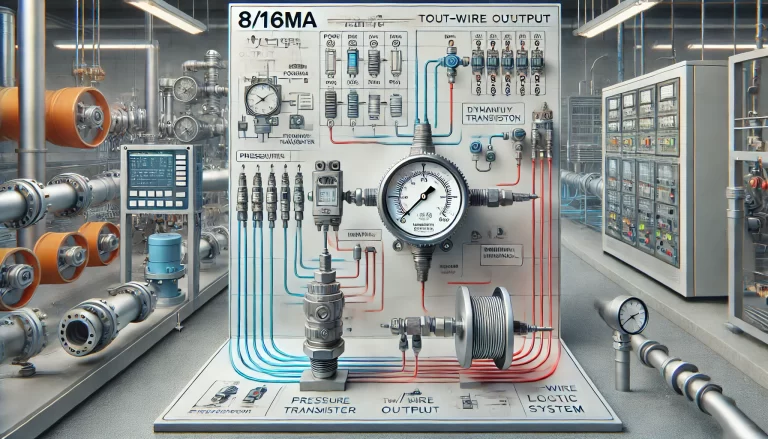Introduction
In electrical control systems, two-wire and four-wire configurations are commonly used wiring methods. They differ significantly in terms of working principles, applicable scenarios, and advantages and disadvantages. This article provides an in-depth analysis of the basic principles, features, application scenarios, and pros and cons of these two wiring methods, offering readers a clearer understanding of how to choose the right one for their specific needs.

Two-Wire System
A two-wire system consists of two conductors: one used for transmitting control signals and the other serving as the power or ground line. Its simplicity in design makes it a popular choice in systems where control signals and power share the same path. This configuration is predominantly used in direct current (DC) environments due to the lower fluctuation of DC power, which complements the simplicity of the design.
Advantages of Two-Wire Systems:
Low Cost: Fewer wires result in reduced material and installation costs.
Simple Installation: With only two conductors, installation and wiring are straightforward.
Suitable for Low-Power Applications: Ideal for tasks requiring minimal power and current, such as small devices and sensors.
Disadvantages of Two-Wire Systems:
Susceptible to Interference: Sharing a single path for power and signal makes the system more prone to electromagnetic interference, especially in long-distance transmissions.
Signal Attenuation: Signal strength can degrade over longer distances, leading to slower response times or potential errors.
Limited Load Capacity: This system is unsuitable for high-power devices or complex systems due to its low load-handling capability.
Common Application Scenarios:
Household Appliances and Control Systems: Used in low-power applications such as lighting, access controls, and small home devices.
Simple Switching Systems: Ideal for switches, relays, and basic actuator controls.
Low-Power Sensors: Widely used in temperature sensors, proximity switches, and similar devices.

Four-Wire System
A four-wire system consists of four conductors: two dedicated to control signals and two for power supply. This configuration is suitable for both alternating current (AC) and direct current (DC) systems. In AC systems, the separation of power and signal lines reduces interference, ensuring stable and accurate signal transmission.
Advantages of Four-Wire Systems:
Enhanced Interference Resistance: By separating power and signal lines, four-wire systems effectively minimize noise interference.
Support for Complex Systems: This configuration is ideal for high-precision systems requiring stable and reliable performance.
Long-Distance Transmission: Provides stable signal transmission over extended distances, making it suitable for large-scale or remote systems.
Disadvantages of Four-Wire Systems:
Higher Cost: Requires more conductors and equipment, increasing overall installation and material expenses.
Complex Wiring: The additional conductors make installation and routing more intricate, particularly in space-constrained environments.
Limited Applicability: Overly complex for small-scale systems, where simpler solutions like two-wire configurations would suffice.
Common Application Scenarios:
Industrial Automation: Frequently used in automated production lines, robotic controls, and high-precision sensor systems.
Remote Monitoring and Control: Essential for systems requiring stable signal transmission over long distances, such as power facilities, petrochemical plants, and traffic management systems.
High-Power Equipment Control: Suitable for large motors, elevators, and other high-power devices requiring precise control.

Comparative Summary: Two-Wire vs. Four-Wire Systems
To facilitate easier comparison, the following table highlights the key differences between two-wire and four-wire systems:
| Feature | Two-Wire System | Four-Wire System |
|---|---|---|
| Cost | Low | High |
| Installation | Simple | Complex |
| Interference Resistance | Low | High |
| Signal Attenuation | Higher over long distances | Minimal |
| Load Capacity | Limited to low-power devices | Suitable for high-power systems |
| Application Scenarios | Simple systems and short distances | Complex systems and long distances |
Key Considerations for Selection
When choosing between two-wire and four-wire systems, consider the following factors:
System Complexity: For simple, low-power tasks, two-wire systems are sufficient. For complex or precision tasks, opt for four-wire systems.
Environmental Factors: In environments with high electromagnetic interference, four-wire systems offer better performance.
Distance: For long-distance applications, four-wire systems provide more reliable signal transmission.
Budget: Two-wire systems are more cost-effective for small-scale installations, while four-wire systems, though costlier, justify the expense in critical applications.

Conclusion
Both two-wire and four-wire systems have their advantages and disadvantages, making them suitable for different scenarios. Two-wire systems are favored for their simplicity and cost-effectiveness in small-scale applications, while four-wire systems excel in reliability, precision, and long-distance capabilities for larger or more demanding setups.
The selection should align with the specific requirements of the project, including load capacity, precision, interference resistance, and budget considerations. With a clear understanding of their characteristics, you can confidently make the right choice for your control system needs.
